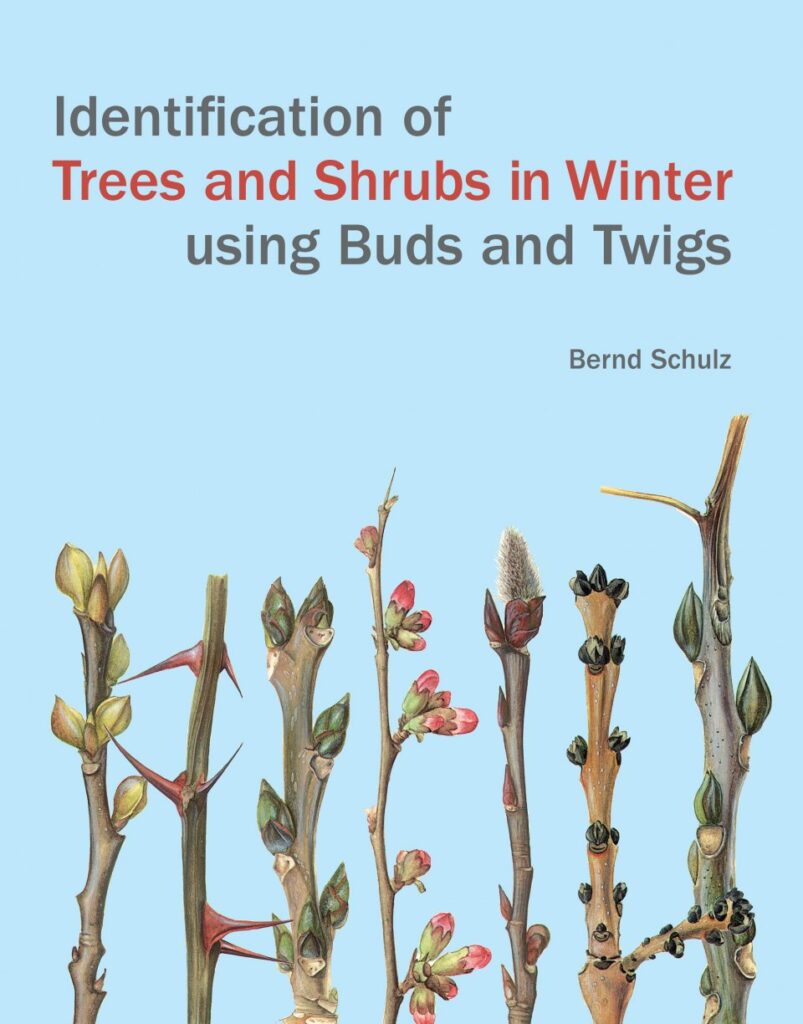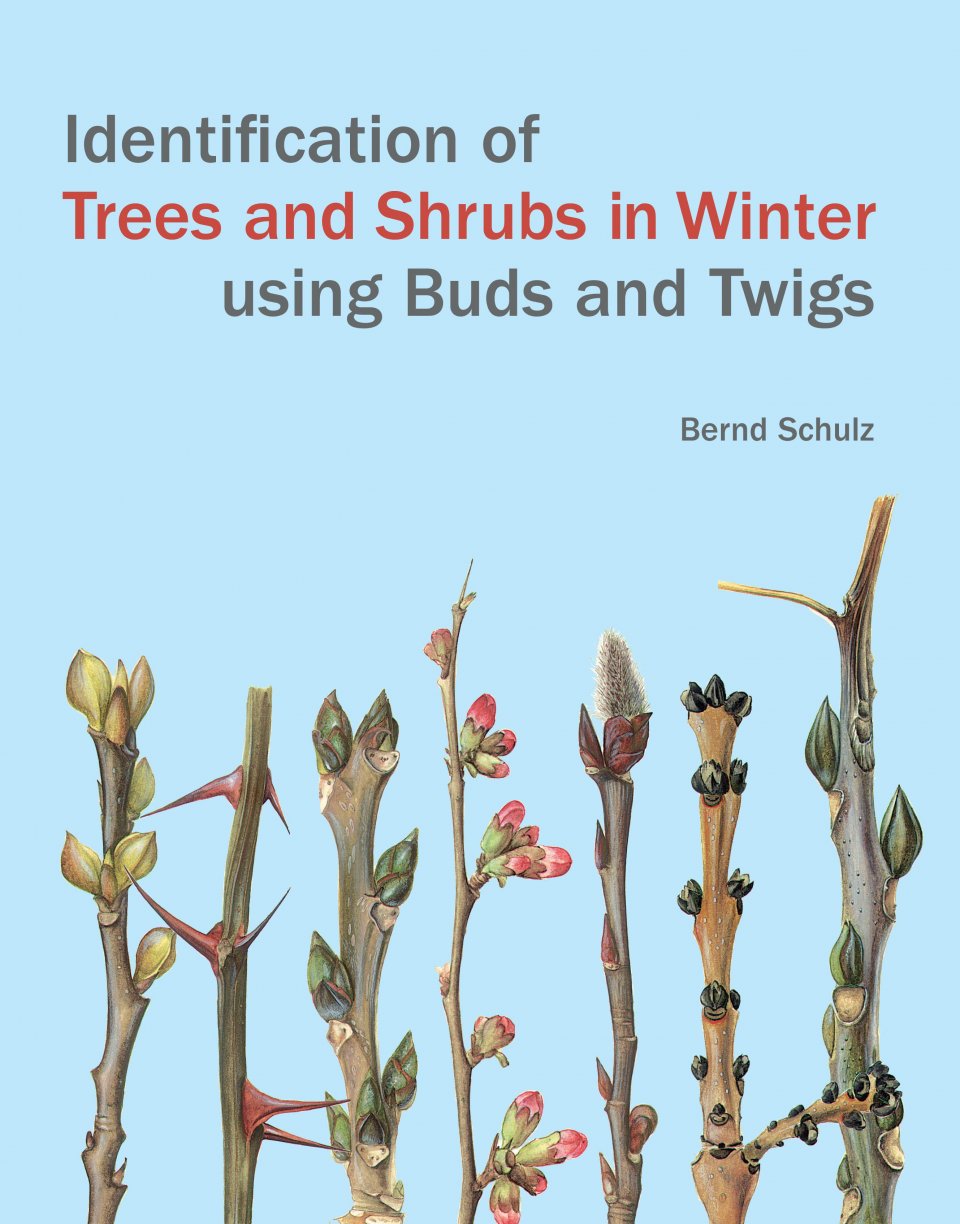View this book on the NHBS website
The first thing to say about this large-format book is that it is a thing of beauty. The author, Bernd Schulz, must be the world’s best painter of twigs. For this book he has painted around 1,400 different twigs and they are reproduced here in full colour, beautifully printed on matt paper. As ever with identification, pictures are much better than photographs, and these could not be bettered.
Pretty well all the temperate deciduous trees and shrubs you are likely to find in parks, gardens and arboretums are here, from tall oaks to bushes right down to currants. Even climbers such as honeysuckle and clematis are included. Conifers, on the other hand, are not, apart from the deciduous larches and cypresses. With the help of keys, including a quick reference key at the back, it is claimed that you can identify any tree or bush from winter twigs alone. First, though, you will need to familiarise yourself with such terms as ‘accessory bud’, ‘infructescence’ and (a new one to me) ‘prophyll’.
One is left wondering who needs to identify trees in winter in parks and gardens. In formal gardens such as Kew, many of the trees can be identified easily enough from the little label provided for us. Furthermore, identifying native British trees and shrubs is not that difficult even in winter, and this book would only confuse matters by subsuming them among hundreds of exotic species: cannot see the trees for the wood, so to speak. Some 700 species are described, and native ones receive no more room than the most exotic mulberry or hydrangea, and without notes that could help identification in Britain (where nearly all native limes are coppiced or pollarded, for instance). On the other hand, it overlooks most of our whitebeams (understandably, it must be said) and does not even illustrate the English Elm, let alone its well-known segregates, Cornish Elm, Plot’s Elm, Huntingdon Elm, and so on. Some of our dog-roses and alpine willows are omitted, and only nine cotoneasters are included from the dozens of naturalised species.
A few of the names are unfamiliar. Our two service trees, Sorbus torminalis and Sorbus domestica, are placed in new genera, Torminalis and Cormus respectively. The Medlar has become a Crataegus (a hawthorn, that is). The plant we know as Duke of Argyll’s Teaplant is newly christened as the Chinese Box Thorn. These small points underline the larger one that this book is a translation from a German original. This is a tricky undertaking because botanical terms and definitions differ between countries, as the author’s note on translation warns. What I think might have happened is that someone at Kew fell in love with Bernd Schulz’s illustrations and found the money to produce an English edition of excellent quality, but not thoroughly edited for use in Britain. Moreover, the book was ill-timed. The BSBI is about to produce a field guide on the exact same subject, with simpler illustrations but more closely tailored to what British naturalists really need.

